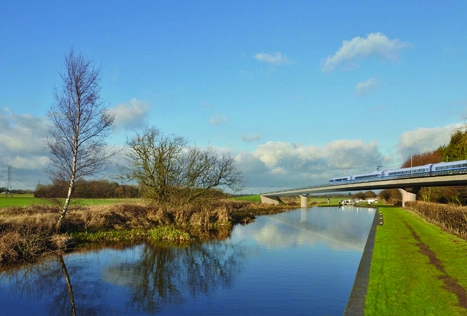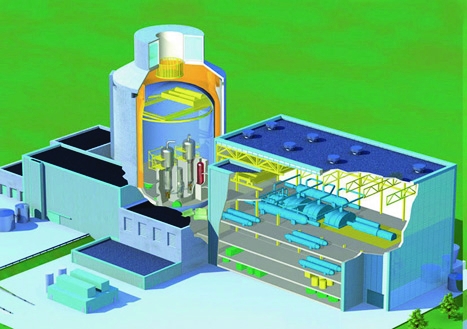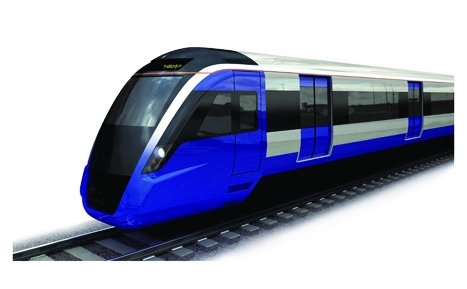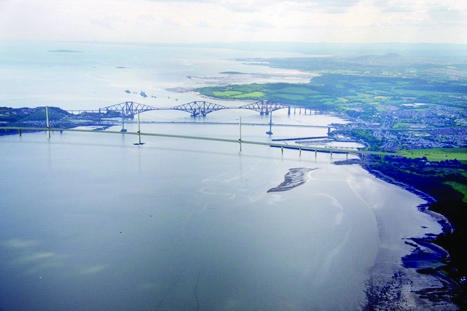One of the more surprising and controversial parts of the Chancellor of the Exchequer George Osborne’s Autumn Statement last November was his announcement of a £30bn programme of infrastructure construction projects. Taking place from Devon to the Scottish border, the schemes would assist with the much talked about ’rebalancing of the economy’ away from the disastrous over-reliance on the financial sector, Osborne said.
The programme consists of 40 projects, including motorway and other road schemes and rail projects, such as the Metro system in Tyne and Wear and the Transpennine Express line between Leeds and Manchester. With £5bn of the money coming from public funds, the chancellor said that £20bn should be contributed from British pension funds, with the balance from insurance companies and from investors in China.
“Timing is a key factor in solving a problem that has been bedevilled the construction sector for decades: poor planning”
It’s an ambitious, long-term scheme. The programmes are set to begin between 2014 and 2018 and carry on through subsequent decades. ’We are finding the resources in difficult times to build the railways, to build the roads,’ Osborne told the House of Commons. ’We have got to weather the current economic storm and we have got to lay the foundations for a stronger economic future.’

Infrastructure now seems to be firmly in the government’s mind. Osborne’s announcement joined schemes that were already announced, such as the construction of a road crossing at the Firth of Forth to replace the suspension bridge built in the 1960s, which is showing serious signs of deterioration; Crossrail, the London-spanning underground train line where tunnelling is set to begin in the coming months; and the construction of power stations, including the 10 new nuclear installations around the coast. Other projects on the slate include the renewal of much of Britain’s electricity transmission grid, the construction of offshore wind farms in the North Sea with improvements to the ports on the east coast, and, of course, the major undertaking of HS2, the high-speed train line from London to Birmingham and on to Manchester and Leeds, announced earlier this month. There are also speculative projects such as the Severn Barrage, plans for which remain under discussion.
But can infrastructure projects ever really play a role in rebalancing the economy? Many commentators were sceptical; while needed, the projects were seen as less important than boosting the manufacturing sector to improve exports. Moreover, they were starting too late to be of immediate help and there were insufficient safeguards to ensure the work went to British contractors.

But according to Nick Baveystock, director-general of the Institution of Civil Engineers (ICE), critics of the programme are missing the point. ’The approach is right,’ he told The Engineer. ’It’s not starting too late and it’s not taking too long.’ Concentrating on the construction phase of the schemes doesn’t take into account the most important thing, he said: the benefit of the new infrastructure itself. ’Better connectivity allows people and goods to move around the country more easily,’ added Baveystock. ’It means that we don’t have to rely on one or two hubs; it reduces our baseline costs and it increases productivity.’ The new roads and rail will help manufacturers, particularly in the north where connectivity is poor compared with the south east and the Midlands, to sell their products to European markets, he said.
Baveystock explained that the timing of the projects is, in fact, a key factor in solving a problem that has bedevilled the construction sector for decades: the lack of a clear project pipeline to allow staff to plan properly. ’The great advantage of the infrastructure plan is that it allows the supply chain to work out when it’s going to be operating on which programmes, and that’s inherently more efficient,’ he said. ’The idea that we start lots of projects today in an unco-ordinated way makes the programme more expensive.’

This clear schedule can also help the country address skills gaps in a co-ordinated way, he added. ’We can train people in time for projects, rather than suddenly finding that we need a glut of flood-defence engineers, for example, then five years later find that we’re not using any.’ The UK needs to address particular skills gaps such as a shortage of programme managers, he said. ’And we could also do with high-tech specialists in nuclear and other niche areas. Training them ourselves, according to a schedule that everyone in the sector knows, avoids having to buy those skills in at a higher price.’
The pipeline of projects is also an important factor for investors – particularly those who are new to infrastructure projects, such as pension funds, or new to the UK, such as the Chinese, said Scott Steedman, a former director of strategy for capital project consultancy High-Point Rendel and a Fellow of the Royal Academy of Engineering.
’One of the problems of working in the UK has been uncertainty over planning and timing, and so on, which made it unattractive to bid into. Companies need a very clear outcome ahead of them. It’s really important, therefore, that there’s certainty over the commitment to the project itself and the scheduling of it.’
Steedman sees the renewal of infrastructure as vital for the health of the country. ’The unique thing about infrastructure projects is that they have a life well in excess of 200 years, or even thousands,’ he said; many of England’s roads bear the dead-straight imprimatur of Roman design and some of the major rail routes are approaching their bicentennial. ’Once we build it, we put in place structures that are the arteries of the country for the indefinite future; they are the channels along which the country and its industry grow. The flipside of that is that, if you don’t invest properly, you end up with an endless drip-drip of systems that don’t quite work, and the costs of that, in terms of maintenance, repair and so on, are very significant for the country as a whole.’

Another unique factor with infrastructure is that it doesn’t really matter whether the contractors that undertake the projects are UK based or not, said Steedman. ’These projects have to be delivered within the UK, of course, so you have to use British skills to do that.’
Tim Chapman, head of the London Infrastructure Group at Arup who is currently working on Crossrail, went into more detail on this. ’Usually, if you give people money [for a project], it leaks away from the country quite quickly. But construction uses people and materials that are here, so most of the money invested stays within the economy.’
Chapman has personal experience of this. ’I’ve had UK companies complaining about foreign contractors on Crossrail, but I don’t agree,’ he said. ’The foreign engineers are few and far between and they live and spend money in the UK. The only money that goes overseas is profit – and we’re working to a contract that’s been negotiated pretty hard. There’s not a huge amount of profit for them.’
Baveystock agrees: ’The issue is about getting value for money. The companies based in the UK are multinationals anyway, and we have to look to get the best results for the UK in terms of economic return and the infrastructure itself, of course.’ Steedman added that the UK isn’t short of world-leading construction contractors: ’Costain and Balfour-Beatty, to name just two, are doing very good work.’
Another criticism of infrastructure projects is that they use technology and skills that haven’t changed for decades; they do little to advance the UK’s ’knowledge economy’ and don’t benefit export potential. Baveystock disagrees: ’There’s huge space for innovation, not only in technology but in the process, and we can move our education and training package at all levels, particularly in professional development, to reflect the needs of the country. That’s something I haven’t seen in the past.’
For Steedman, the most important areas for innovation are in the planning stages of projects. ’You have to optimise the performance of the infrastructure elements ahead of the building process because, once you’re into construction, changes are expensive and risky,’ he said.
’One of the big challenges of infrastructure is that you have to get it right first time; you can’t prototype,’ Steedman added. ’You have to demonstrate that your new bridge, tunnel, airport or whatever can be built lighter, thinner, faster or with newly developed materials, and that will achieve what the client is looking for.’
“Better connectivity allows people and goods to move around the country more easily”
Nick Baveystock, Ice
Smart infrastructure is a fast-developing sector and the Royal Academy of Engineering is about to publish a report setting out progress and advocating its wider usage. The leader of the study, member of the RAEng policy committee Dr Martyn Thomas, said this can play an important role in the wider rebalancing progress through developing new products. ’Smartness can take the form of sensors and systems that enable convoys of vehicles under autonomous control, although that’s something that’s fairly far into the future,’ he said. ’But another aspect is sensors embedded into the infrastructure that report on its performance. That allows maintenance to be scheduled and would help avoid sudden closures and expensive repair projects.’
Chapman is another enthusiast. ’UK motorways are leading the world on intelligent signalling already and there’s exciting work going on with information about intelligent transport systems over mobile phones,’ he said. ’The other thing that’s coming in is fibre-optic cables that report strain as they bend, which tells you about movement during construction and condition during the lifetime of the infrastructure.
Sensors would have to be built into infrastructure in a way that allows them to be upgraded and replaced, said Thomas, but the advantages could be great. ’Once you have this grid of distributed sensors generating a lot of data, that could give rise to business opportunities. Real-time data of all types is valuable in business terms.’
Cost is an issue, of course. ’Whether the investment environment is such that it’ll allow people to make that extra investment now is a matter of economics and whether the Treasury and the private sector are interested in taking the longer view,’ said Thomas. ’But these smart technologies are actually quite a marginal cost, compared with the cost of building the infrastructure itself.’ He pointed out that it would be an advantage for British firms developing these technologies to deploy them in UK projects. ’If you’re bidding into private-sector projects overseas, you’re always asked what you’ve done for your own government – and if you don’t have those reference sales it damages your credibility.’
But paying for such technologies could be a problem, ’In times of financial stress, government departments are unwilling to spend on something that another department might pay for,’ said Thomas, adding that he foresees wrangling between the Treasury, the Department for Transport and the Department for Business, Innovation and Skills.
The government’s role in infrastructure projects is unclear. ’It only needs to be involved to the extent that it has to be the best possible client, with well-organised procurement structures and contractual routes that are appropriate to the risks and complexity of the projects,’ Steedman said. ’The government can, and does, promote integration of the supply chain and it can keep an eye on regulation to avoid red tape getting in the way of progress. But it’s really important that it never goes back to the days of simply accepting the lowest-price quote.’ The UK used to be notorious for overspending and over-running on infrastructure projects – a legacy of poor planning, budgeting and execution, said Chapman. ’But the Channel Tunnel fast link and HS1 wereon time and on budget, and the Olympics is on budget and ahead of schedule,’ he said. ’We can, are and will get projects in on time. The level of resource is commensurate with the amount of money that’s being spent on the project itself.’
in depth package deal
The programme includes road, rail and power projectsThe package of projects announced by Chancellor of the Exchequer George Osborne includes:
- Acceleration of building of the Tyne and Wear Metro;
- Electrification of Transpennine Express, cutting journey times between Manchester and Leeds by 45 minutes;
- Linking the M56 at Manchester Airport to the A6 south of Stockport;
- Major works on the A14 around Kettering to relieve congestion and in Cambridgeshire to improve junctions;
- Improvements to roads around the A45/46 interchange in the West Midlands;
- Increasing capacity of the M3 in Surrey and the northern section of the M25;
- Extending the Northern line to Battersea; and
- Additional funding for the Kinkerswell Bypass in Devon.
In addition, nuclear power stations are planned for Bradwell in Essex; Hartlepool; Heysham in Lancashire; Hinckley Point in Somerset; Oldbury in Gloucestershire; Sellafield; Sizewell in Suffolk; and Wylfa in Anglesey.
London projects also include Crossrail and Crossrail 2, linking Hackney and Chelsea; also planned is the Thames ’super sewer’.
Scottish infrastructure projects include the construction of a replacement Forth road bridge.




Project to investigate hybrid approach to titanium manufacturing
What is this a hybrid of? Superplastic forming tends to be performed slowly as otherwise the behaviour is the hot creep that typifies hot...